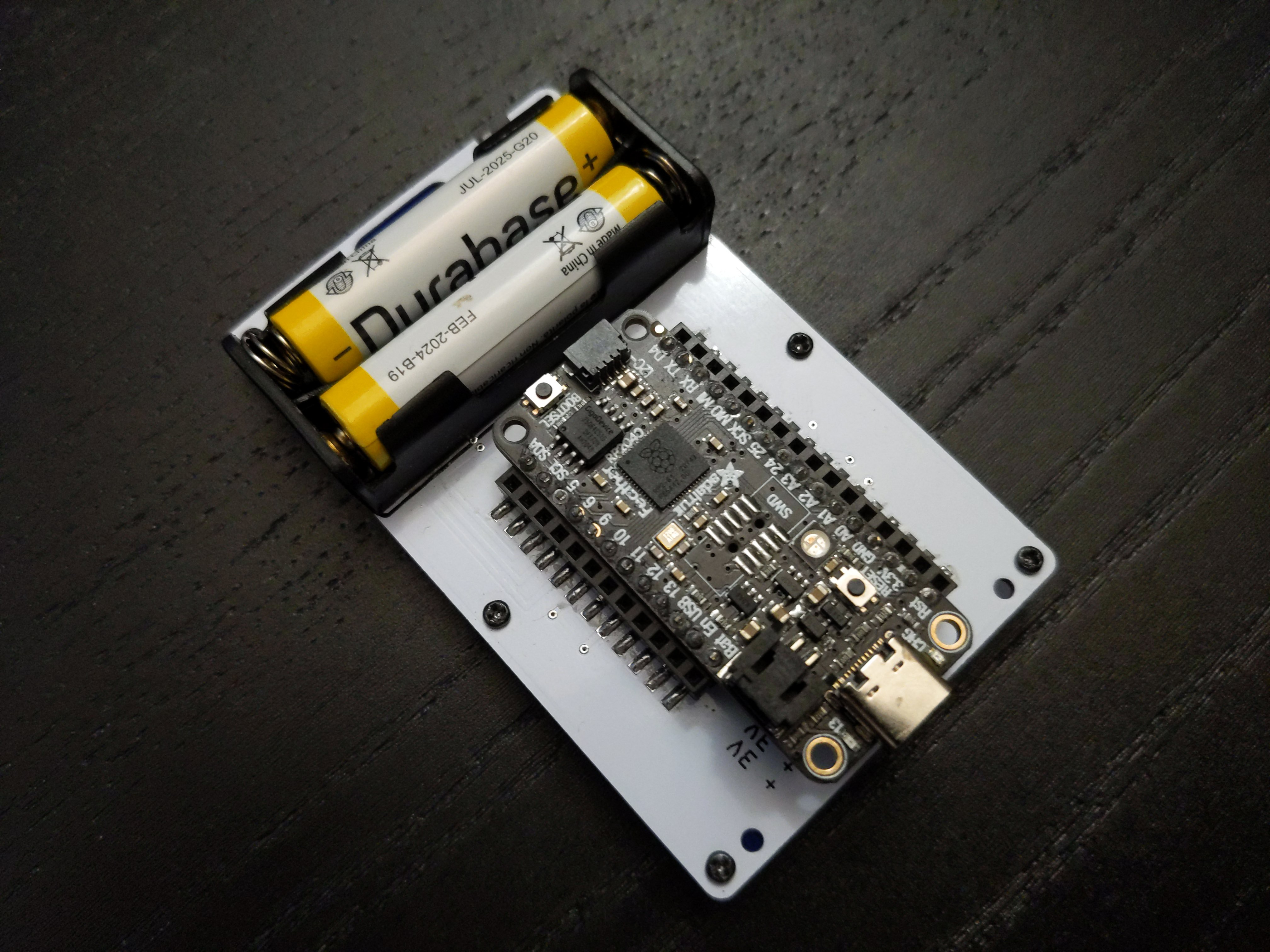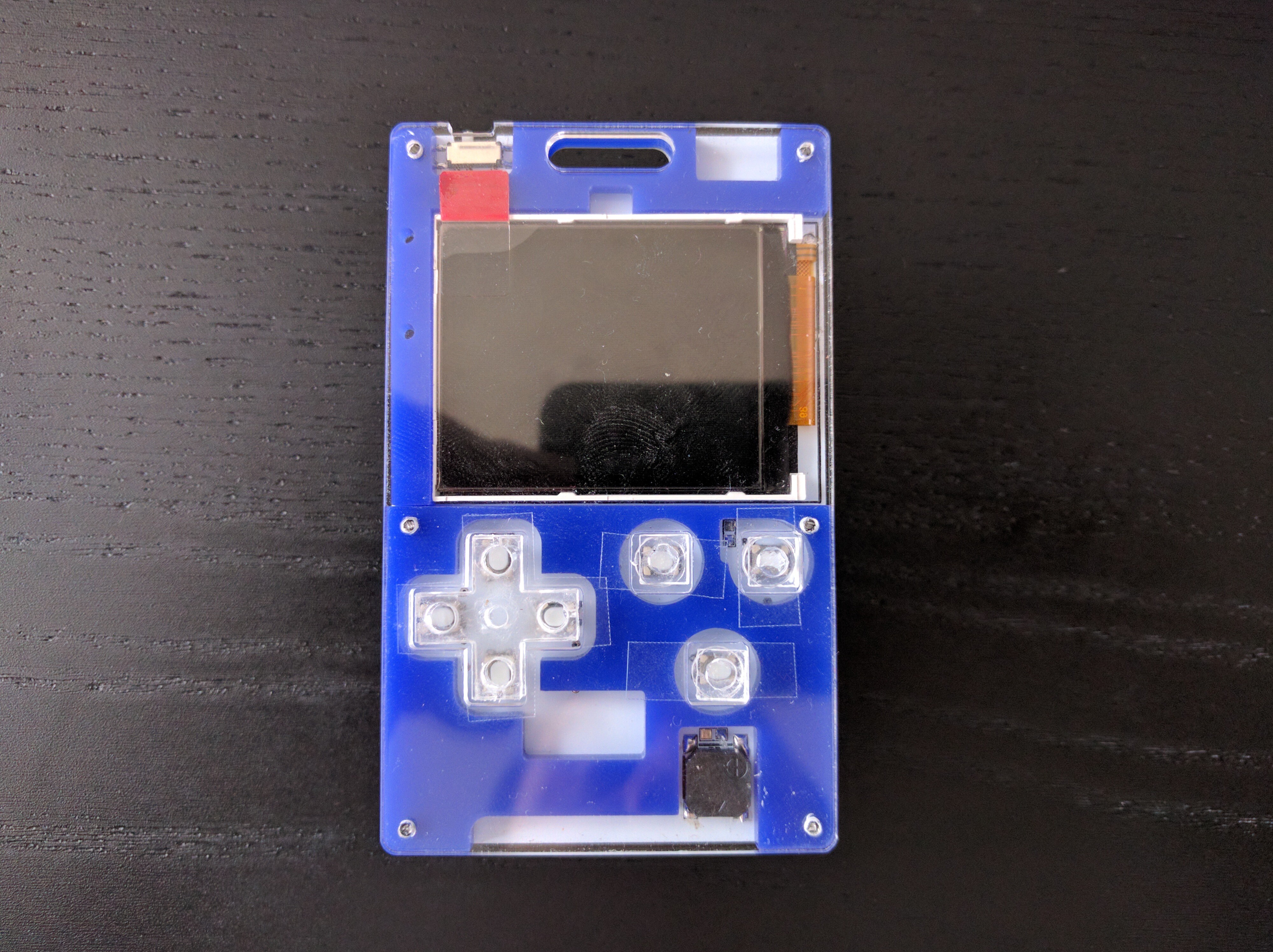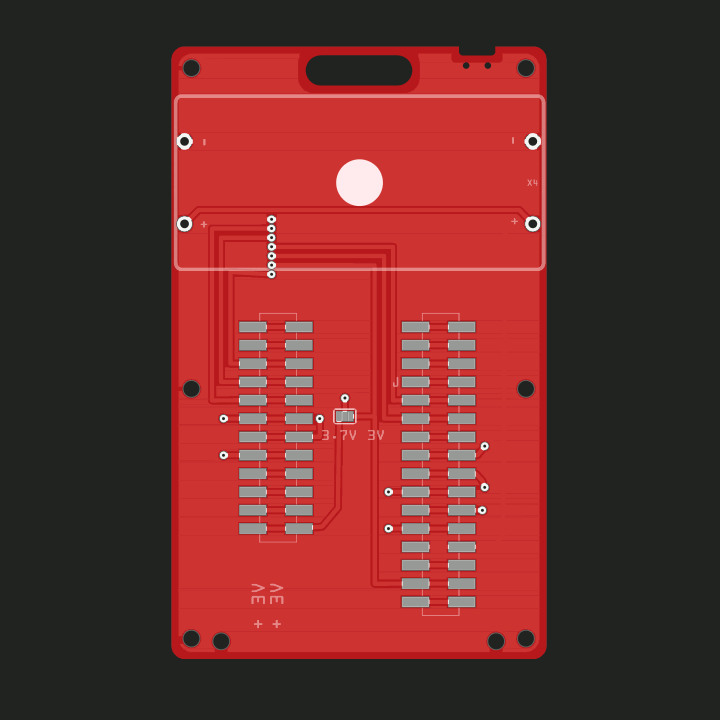As the Adafruit Feather form factor of development boards is getting more and more popular, there are more and more interesting Feathers I would like to try to make a game console with. NRF54, ESP32S2, Giant Board, Orange Crab — to only mention a few of them. But doing it on a breadboard is inconvenient, and designing and ordering a PCB for each new microcontroller takes too long, so I decided to take the PewPew M4, remove the SAMD51 microcontroller from it, and replace it with Feather headers, so that I can plug any Feather-compatible board that has enough pins (sorry HUZZAH).
 deʃhipu
deʃhipu







